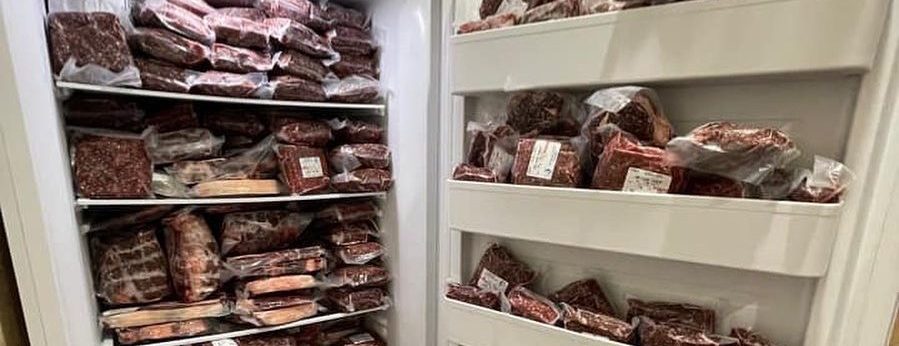
For those beef lovers purchasing pre-organized whole or half beef, the process of freezing and storing large quantities of beef becomes more straightforward but no less critical. Here’s how to handle and freeze these pre-cut portions effectively:
Receiving from the Butcher:
- Inspect the Cuts: When you collect your beef, ensure that all cuts are properly handled and packaged by the butcher. This typically includes vacuum sealing, which is ideal for freezing.
- Inventory Check: Confirm that you’ve received all the cuts you expect and note them for your inventory management.
Packaging for Optimal Freezing:
- Vacuum Sealed by the Butcher: If the beef is already vacuum sealed, you can directly place it in the freezer. The vacuum sealing process removes air, preventing freezer burn and extending the shelf life.
- Additional Wrapping: If you plan to store the beef for an extended period, consider double wrapping the meat in freezer paper or heavy-duty foil.
Freezing Strategy:
- Quick Freezing: Ensure your freezer is at 0°F (-18°C) or below before loading it with beef to facilitate quick freezing and minimize ice crystal formation.
- Organize by Cut and Size: Arrange the beef in your freezer by cut and size, placing larger, thicker cuts like roasts at the back and smaller cuts like steaks more accessible.
Labeling and Organizing:
- Clear Labeling: Even if pre-packaged, it’s helpful to label each package with the type of cut and the date it was frozen. This helps manage rotation and usage.
- Freezer Layout: Maintain an organized layout where you can easily access what you need without having to rearrange everything, which can raise the temperature and affect the other stored meat.
Thawing and Using Your Beef:
- Refrigerator Thawing: Plan to move the beef from the freezer to the refrigerator well in advance of cooking. Large cuts can take up to 48 hours to thaw, while smaller cuts might be ready overnight.
- Maintaining Quality: Avoid refreezing thawed beef to preserve its flavor and texture. Plan your meals according to what you thaw to maximize the quality of your meals.
Freezer Space for Whole or Half Beef
We have put together a small guideline for when it comes to storing a half beef or whole beef.
For a Half Beef (6-10 Cubic Space Ideally):
- 6 cubic feet: This would be a tight fit, suitable for storing just the half beef, but it may not leave much room for additional frozen goods.
- 10 cubic feet: This would provide more space for the half beef and some other frozen items.
For a Whole Beef (16-20 Cubic Feet):
- 16 cubic feet: This would be a tight fit for a whole beef and may not leave much room for other frozen goods.
- 20 cubic feet: This would offer ample space for whole beef, and you could also store whole chickens, pigs, or lamb alongside it.
Bulk buying beef, such as half or whole beef at a time, can be a smart and cost-effective way to ensure a steady supply of high-quality meat. By following these storage and thawing practices, you ensure that every piece of meat remains as fresh and flavorful as possible. This approach not only helps in managing large quantities efficiently but also in enjoying high-quality beef on demand.
Get in touch with us today if you are interested in taking the next step on purchasing a half or whole beef.







